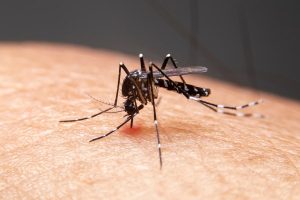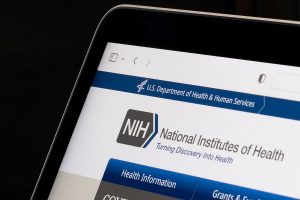When a baby is born, the mother’s body provides a pathway into the world, but the journey also exposes them to beneficial bacteria that live in and on their mom. But that critical exchange doesn’t happen during a cesarean section delivery.
Now, researchers report that swabbing babies delivered via C-section with gauze that has been seeded with their mother’s vaginal fluids delivers the same protective benefits to these newborns.
“We thought it was important to study this because this is about the health of future generations of kids,” said senior study author Maria Gloria Dominguez-Bello, a professor of microbiome and health at Rutgers University in New Jersey. “We will continue using antibiotics, although we need to improve them, narrowing their spectrum, and we will continue using C-sections because they save lives. The question is, how can we save — as parents — the babies from collateral costs?”
Mom’s microbiome naturally educates the immune system of the baby at birth, Dominguez-Bello explained. Evidence indicates that when babies are perturbed in very early life, either because they are born by C-section or because they take antibiotics, the immune system can inflame later in life.
“It exacerbates inflammation and inflammation underlies very, very many diseases, including asthma, allergies and inflammatory conditions of the colon, celiac diseases,” Dominguez-Bello said.
Her team’s study included 177 babies from the United States, Chile, Bolivia and Spain, 98 born vaginally and 79 by C-section. Of the C-section deliveries, 30 of the babies were swabbed with maternal vaginal gauze after birth.
Lab analysis showed that the microbiota of the babies who were swabbed at birth was similar to that of those born vaginally.
The researchers also found that maternal vaginal microbiomes on the day of birth were similar to other areas of their bodies — gut, mouth and skin — which suggest the fluids help colonize bacteria across their babies’ bodies.
“What we show is that we can normalize at least partially the feces, the skin and the mouth microbiome of those babies during the whole entire first year,” Dominguez-Bello said. “What we still don’t know is the health implications. Are these babies being protected against increased risk of diseases? We don’t know that yet.”
It isn’t possible to reverse the immune system once it’s set, Dominguez-Bello said. Conditions such as celiac disease or allergies have no cure, only treatments that reduce symptoms.
It’s also not clear how big the window of reversal is, she added. Maybe it’s a few months, not just at birth, but they don’t know for sure.
The United States has C-section rates that are about 30% or more of all births. The number is much higher in other regions, Dominguez-Bello said, noting that in Rio de Janeiro, Brazil, more than 90% of babies are born by C-section.
Other research groups, including one at the Karolinska Institute in Sweden, are doing these seeding studies, she said.
The report will be published in the Aug. 13 issue of Med.
Dr. Karen Puopolo is chief of newborn medicine at Pennsylvania Hospital in Philadelphia. Commenting on the study, she said, “It is the culmination of years of really important work done by this research group that has focused on the hypothesis that there is exposure of the newborn to the initial maternal gastrointestinal and genital urinary flora. And that those flora during a vaginal delivery are the pioneering species, as we like to call them, the seeds that set up the infant microbiome.”
While investigators are researching these questions, vaginal seeding has not become common practice. Both the American College of Obstetricians and Gynecologists and the American Academy of Pediatrics have issued statements at different times, saying this is important research, but it belongs in a research setting as the risks and benefits have not yet been clearly demonstrated, Puopolo noted.
“The maternal flora is in fact what babies were meant to experience during a vaginal birth, but what’s natural isn’t always completely safe,” Puopolo said.
Certain bacteria and viruses an infant can contract at birth can be dangerous, which is why, for example, antibiotics are given during vaginal births when a mother has group B streptococcus. Those antibiotics aren’t given for C-section births because they’re not necessary, she said.
Puopolo noted that her research group has examined a related topic, the role of antibiotics given during delivery and birth, and their potential impact on the newborn and childhood health, such as future allergies and weight gain.
“We continue to look in a very safe and organized and scientific manner at all aspects of delivery and use of antibiotics around delivery, the use of antibiotics in babies, and making sure that we understand nature and we understand what happens when we alter nature,” Puopolo said. “And we understand where that might be good and where that might be less good.”
More information
Learn more about the microbiome by visiting the NIH Human Microbiome Project.
SOURCES: Maria Gloria Dominguez-Bello, PhD, Henry Rutgers professor of microbiome and health, department of biochemistry and microbiology, Rutgers University, New Brunswick, N.J.; Karen Puopolo, MD, PhD, chief, newborn medicine, Pennsylvania Hospital, and associate professor, pediatrics, University of Pennsylvania, and attending neonatologist, Children’s Hospital of Philadelphia, and member, American Academy of Pediatrics Committee on Fetus and Newborn; Med, Aug. 13, 2021
Source: HealthDay
Copyright © 2025 HealthDay. All rights reserved.

















